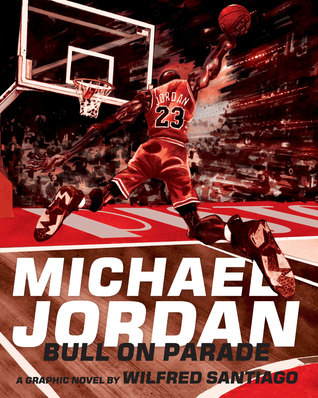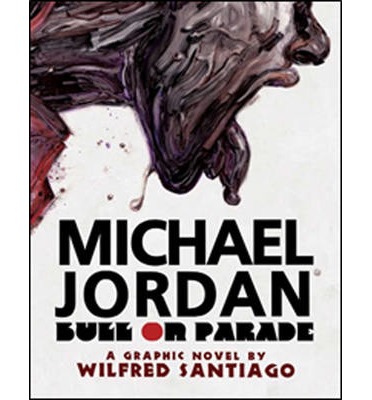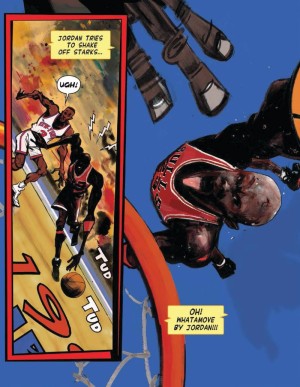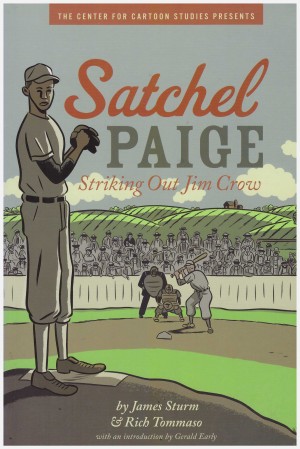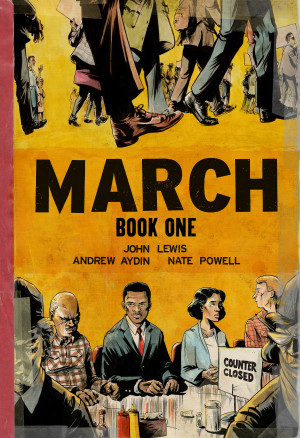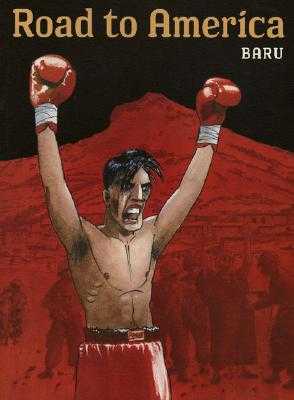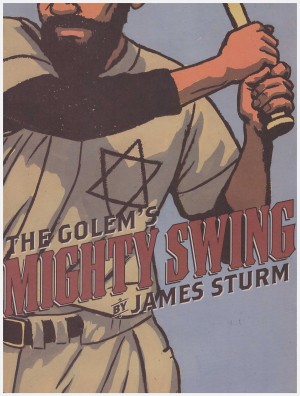Review by Jamie McNeil
In the 1990’s Basketball exploded onto the international scene largely because of one man, Michael Jordan, widely considered the greatest basketball player ever. With the Chicago Bulls, Jordan went on to become one of the most decorated players in the NBA (National Basketball Association), his life and career the subject of Wilfred Santiago’s beautiful biography Michael Jordan: Bull on Parade.
The book opens with this quote by Antoine du Saint-Exupéry, “Perfection is finally attained not when there is no longer anything to add, but when there is no longer anything to take away.” Santiago then moves to the closing moments of the Bulls’ 1991 match against the New York Knicks, the young Bulls team on their way to their first NBA championship. Making use of quotes, newspaper headlines and action footage as inspiration, Santiago examines Jordan’s personal and professional life in an artistic style that utilises the straightforward (Jordan in interviews) to over exaggerated (notorious Detroit Piston Bill Laimbeer). He utterly captures that iconic image of ‘His Airness’ soaring effortlessly through the air, long limbs extended, sweat glistening on bald pate, tongue protruding in concentration as he slams the ball through the hoop, instantly transporting you back in time. Jordan, his team and family all come to life in swirls of brushwork, the darker browns mixing with lighter streaks illustrating the sweat streaming off him or bursts of brightness for the glare of lights. The joy and frustration of crowds in the stands, the disappointment of opponents, the TUD TUD of a consistently bright orange ball bouncing is palpable throughout. You are among the highs and the lows, tasting the popcorn, hearing the cheers and the groans.
Jordan’s skills and athleticism bordered on the god-like, displayed in garish colours, but it’s the humanity of the man that Santiago so elegantly conveys, using a grey wash to keep the colours in check and contrast Jordan’s early years and private life. We glimpse his family life as adolescent and adult, witness disdain for school, passion for sport, the relationship with his father.
At first these are separate chapters quickly segueing into chapters where the playing career contrasts the pressures of celebrity status. These highlight payoffs to a lover, extraordinary gambling wagers, and big business deals playing out against the political and social background of a 1990s USA fraught with racial violence, political unrest and the rise of gangsta rap. Did Jordan unwittingly foster social apathy among sportsmen by refusing to use his status to promote positive change or speak up against injustice, choosing to be silent and voice no political opinion? Santiago lays out the facts as they are, only ever employing sensationalism to emphasise Jordan’s pop-culture status, and doesn’t justify harsh criticism from detractors, letting you come to your own conclusions. While he doesn’t flinch from hanging out the dirty laundry, he also goes to great lengths to highlight Jordan’s charitable work, his sadness when his friend Magic Johnson is diagnosed HIV positive, portraying a man who struggles with the heavy expectations placed on him.
Bull on Parade only shows snapshots of Jordan’s life, so it helps to be even vaguely familiar with his career. Even so, this is a beautiful attempt at understanding and recording the life of one of the most influential sportsmen of the Twentieth century. Like the man himself, it is unlikely we will see a sports biography this spectacularly rendered for a long time.
